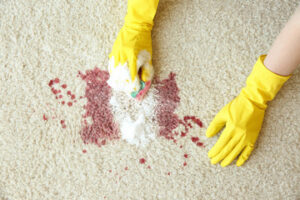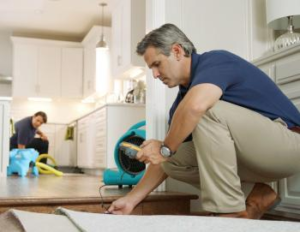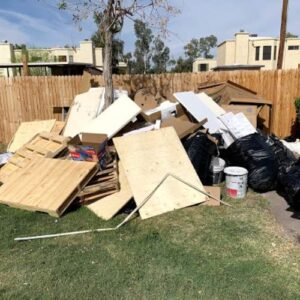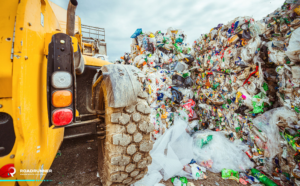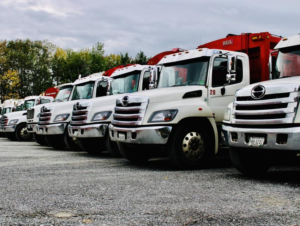IPM is a system of Pest Control Oak Ridge TN that reduces or eliminates the use of chemical pesticides. It starts with monitoring and identifying pests. Correct identification lets you decide whether a pest can be tolerated or warrants control.
Denying pests food, water, and shelter prevents them from building up to unacceptable levels. Physical barriers and mechanical controls like traps, screens, and fences are often used to accomplish this.
Prevention

Prevention is an important part of IPM, which focuses on keeping pests out of the garden or landscape. It starts by selecting plants adapted to our environment, planting them in the right place, and maintaining good soil health. It continues by observing your yard or garden regularly and recording pest activity. You can then look for non-chemical ways to manage the pest, such as cultural controls (preparing the soil, plant spacing, irrigation, and fertilization) or mechanical controls (weeding and mowing).
The best way to avoid a problem is to prevent it from happening in the first place. Pests are organisms that damage or interfere with desirable plants in our fields and orchards, gardens and lawns, homes, and wildlands or harm human or animal health. They may also cause a nuisance or harm water quality, wildlife, or other parts of the ecosystem. A pest can be a plant, vertebrate (bird or rodent), invertebrate (insect, tick, mite, or snail), nematode, pathogen (bacteria, virus, or fungus that causes disease), or any other unwanted organism.
When pest populations start to increase beyond acceptable levels, the goal is to control them with non-chemical methods before they cause unacceptable damage. To do this, you need to accurately identify the pest and know its life cycle, damage potential, and natural enemies.
It is also necessary to understand the impact of weather on pest populations, as some species have several generations a year and weather conditions can limit their growth. Biological management strategies include the use of predators and parasites to kill pests or debilitate them. For example, a bacterium called Bacillus thuringiensis produces a toxin that targets caterpillars, causing them to die. This is a very effective strategy for managing caterpillars and many other insect pests, without harmful effects to people or pets.
If preventive non-chemical measures don’t work, it may be necessary to use chemical pesticides. When that happens, it is essential to follow all label instructions for both the pesticide and the application method. This will ensure that the chemicals are used responsibly and only when necessary, so they do not harm humans or pets and do not pollute the environment.
Suppression
A primary goal of IPM is to use less toxic ways to prevent pests or their damage than using chemicals. Nonchemical methods to suppress pests include physical controls (knocking aphids off plants with a forceful spray of water from a garden hose); cultural control (reducing the number of favorable environments in which a pest can thrive; such as crop rotation, selecting varieties that are more resistant to insects and diseases, changing irrigation practices); and biological control(link is external).
Biological control uses organisms like predators, parasites, or disease-causing bacteria to manage pests. These organisms can be effective for managing a number of insect pests without harming people or domestic animals, but they must be properly selected and introduced to achieve this. Several different strains of Bt bacteria are available to target caterpillars, mosquitoes, Lepidopterans, and other pest species.
Chemicals are used sparingly and only when the threat to crops, landscapes, or homeowners is imminent. This is important because it reduces the development of resistance to pesticides and minimizes the risks to human health, beneficial organisms, pets, and the environment. Integrated Pest Management includes monitoring and scouting to identify pests and determine the level of economic injury they pose, rather than simply relying on the presence of a single organism to trigger a control action.
Before deciding to use a chemical, IPM programs evaluate the pest, its life cycle and damage potential, habitat and environmental factors, and the impact on the surrounding ecosystem. This evaluation helps ensure that the pest will not be controlled at a cost that is greater than its economic value. It also identifies the action threshold, the point at which pest populations or environmental conditions indicate that control is needed.
Suppression of pests can be achieved with nonchemical and chemical controls in any landscape or garden setting. In agriculture, this means fields and orchards; in the home garden, it can mean vegetable gardens and lawns; and in public and commercial landscapes, including parks, urban areas, military landscapes, and natural and wildland settings. For more information on integrating pest management in all these areas, visit the National Road Map for Integrated Pest Management(link is external) and contact your USDA-supported Regional IPM Center(link is external). The federal Office of Pest Management Policy provides leadership, direction, and coordination on pest management issues.
Eradication
The goal of eradication is to reduce the presence of pests to such a degree that they no longer threaten the crop or the environment. This is usually accomplished by reducing the use of chemicals and increasing the use of non-chemical control methods. Eradication is a long-term process, and there are many challenges involved in achieving it. For example, it can be difficult to determine what constitutes a significant reduction in the number of pests. Another challenge is to ensure that any remaining populations of a pest are not spreading the disease to new areas, which can be done by implementing an eradication certification process (see Yekutiel 1980).
A key component of eradication is to monitor the population size of a pest on a regular basis. This information is used to make decisions about when and how much to spray for the pest. Monitoring also helps to identify new populations of the pest, which can then be targeted for eradication by applying pesticides or other controls.
Biocontrol is a natural method of controlling pests by using other organisms to suppress their numbers to below economically damaging levels. The organisms can be parasites, pathogens or predators and are usually specific to the pest species being managed. For example, the bacterium Bacillus thuringiensis can be used to kill caterpillars by producing a toxin that disrupts their midgut. Several formulations of this bacteria are available and can be used on a wide variety of insect pests.
Biological control is most effective when it is combined with other management techniques to minimize the need for chemical controls. These can include cultural practices that reduce pest damage, methods of manipulating host mating or feeding behavior and, in some cases, physical manipulation. It is important to note that most natural enemies are very susceptible to pesticides, so reducing the use of pesticides in an area where biological control is being used is essential for their success.
Monitoring
Often, pest populations need to be monitored before treatment decisions can be made. Monitoring is done through scouting, identification and evaluation. Observations are recorded, and the pests’ life cycle and damage potential are evaluated. A threshold is set based on economic or aesthetic injury, to determine when action should be taken. Frequent, high-quality monitoring is key to successful IPM. Monitoring does not have to be costly. Projects can be creative and use their budgets wisely to build sustainable monitoring teams, such as using local volunteers or college students. It is important that the level of effort put into monitoring matches the value of the plants and the amount of time available for observation.
The goal of integrated pest management is to reduce the use of synthetic chemicals to control insects and other unwanted organisms in agricultural settings, homes and landscapes, schools, and public lands. It is an approach that combines science and common sense to reduce the impact of pests on our environment, economy and quality of life.
IPM strategies reduce the need for pesticides by combining preventive measures, such as changing cultural practices or planting resistant species, with less risky controls when necessary. Biological controls such as the release of natural predators and pathogens can also be used to reduce pest problems. IPM also recognizes that insects are part of our ecosystem, and that they help with plant pollination, decomposition and other essential functions.
A pest is any unwanted organism, such as a plant (weed), vertebrate animal (bird, rodent or mammal) or invertebrate insect (insect, tick, mite, snail or slug), that interferes with our food production, destroys our landscapes and wildlands, or harms human health. The Office of Pest Management Policy coordinates the Federal Integrated Pest Management Coordinating Committee, which provides leadership, management and coordination on integrated pest management issues in both the private and public sectors. This committee includes federal agencies and organizations, primarily state agencies with IPM programs, universities, and private sector groups. More information about the Federal Integrated Pest Management Coordinating Committee is available here.



